Durian High Yield Guide
Maximizing Production in Southeast Asia and West Africa
Introduction
For durian growers and agricultural suppliers across Southeast Asia and West Africa, achieving consistent, high-quality yields remains both an economic priority and a significant agricultural challenge. This comprehensive Durian High Yield Guide integrates global research with practical solutions to address critical production barriers, from nutrient management to disease control. By implementing science-backed techniques and precision fertilization strategies, commercial growers can significantly improve fruit quality, yield consistency, and profitability while addressing the specific growing conditions of major durian-producing regions.
1 Understanding Durian Growth Cycles and Key Management Practices
1.1 Vegetative Growth Phase
Following harvest completion, durian trees enter a crucial recovery period characterized by vigorous leaf and branch development. This phase establishes the foundation for next season’s fruit production, making proper management essential for sustained productivity. Research from Thailand’s durian IPM program demonstrates that balanced fertilization immediately after harvest significantly improves subsequent flowering intensity and fruit set.
Strategic applications of slow-release organic fertilizer during this period provide sustained nutrition while rebuilding soil organic matter. Additionally, incorporating bio-organic fertilizer enhances soil microbial activity, improving nutrient cycling and root system development. For growers seeking to produce their own organic amendments locally, using compost starters represents a cost-effective alternative to importing bulk organic fertilizers, reducing transportation costs while maintaining soil health.
1.2 Flowering Initiation and Development
The transition from vegetative growth to flowering represents one of the most critical phases in durian production, directly impacting potential yield. Flower initiation typically occurs during drier periods, with development taking approximately 3-5 weeks. Precision irrigation management—implementing controlled water stress followed by systematic irrigation—can stimulate synchronized flowering, significantly improving harvest efficiency.
Nutritional requirements shift dramatically during this stage, with increased demand for phosphorus to support robust flower development. Applications of 10-40-10+TE water-soluble fertilizer provide high phosphorus content alongside essential micronutrients that promote abundant flower formation. Furthermore, supplementing with amino acid-trace elements liquid as a foliar spray enhances pollen viability and improves pollination success rates, ultimately increasing fruit set potential.
1.3 Fruit Set and Development
After successful pollination, durian fruits undergo rapid development for 3-5 months before reaching maturity. This phase places the highest nutrient demand on the tree, with particular requirements for potassium, which proves crucial for fruit sizing, sugar accumulation, and pulp quality development.
Malaysian agricultural studies indicate that trees receiving balanced nutrition through both soil applications and foliar sprays produced significantly higher fruit counts and improved quality metrics. To address these needs, a combination of 10-5-45+TE water-soluble fertilizer for potassium supplementation and calcium-magnesium-fish protein liquid for preventing fruit splitting has demonstrated excellent results. Regular applications of potassium humate granules further support fruit expansion through improved nutrient uptake and water retention.
2 Addressing Critical Challenges in Durian Cultivation
2.1 Poor Fruit Set and Excessive Fruit Drop
Incomplete pollination and premature fruit drop represent significant yield limitations in many durian orchards, often resulting in substantial economic losses for commercial growers. Multiple factors contribute to these issues, including inadequate pollinator activity, nutrient imbalances, and environmental stresses. Research indicates that boron and zinc deficiencies particularly impact fruit retention, as these micronutrients are crucial for pollen tube growth and auxin metabolism.
To address this challenge, foliar applications of amino acid-trace elements liquid during flowering and early fruit development have demonstrated excellent results, with field trials showing 25-40% improvements in fruit retention. These specialized formulations enhance nutrient uptake during critical developmental windows when soil conditions may limit availability. Additionally, proper irrigation management during dry periods prevents moisture stress, further reducing fruit drop incidents.
2.2 Soil Quality Management and Root Health
Degraded soil structure, nutrient depletion, and root pathogens pose significant threats to durian orchard productivity and longevity, particularly in continuous cultivation systems. Traditional farming practices often lead to soil compaction and organic matter depletion, which in turn limit root development and nutrient uptake efficiency. The innovative hydromembrane technology, developed in Japan, offers a promising approach for controlling soil-borne pathogens while optimizing water and nutrient delivery.
For conventional orchards, incorporating bio-organic fertilizer with beneficial microorganisms significantly improves root zone health while suppressing pathogenic fungi. For soils with history of continuous durian cultivation, rooting-type microbial agent specifically formulated to combat replant disease can rejuvenate aging orchards by reestablishing healthy rhizosphere ecosystems. Applications of lignite humic acid powder further enhance soil structure and nutrient retention capacity, particularly in sandy or degraded soils.
2.3 Phytophthora Management and Disease Control
Phytophthora palmivora, the causal agent of patch canker and fruit rot, represents the most devastating disease in durian cultivation, capable of causing substantial yield losses if not properly managed. This pathogen thrives in humid conditions and can rapidly spread throughout orchards during rainy periods, particularly in poorly drained soils. Indonesian agricultural research has demonstrated that integrated management approaches combining cultural practices with phosphonate treatments provide the most effective control.
Preventative applications of calcium-magnesium-fish protein liquid enhance cell wall strength, creating a physical barrier against pathogen penetration, while rooting-type microbial agent suppresses soil-borne inoculum through competitive exclusion. For orchard rehabilitation, anti-replant microbial agent can help reestablish healthy root systems in previously affected areas, restoring productivity over time. These biological approaches, combined with proper drainage and sanitation practices, form a comprehensive disease management strategy.
3 Advanced Fertilization Strategies for Maximum Yield
3.1 Nutrition Schedule Based on Growth Stages
Implementing a precision fertilizer program aligned with durian’s growth cycle represents one of the most impactful opportunities for improving productivity and resource efficiency. Different growth stages demand specific nutrient ratios to support optimal development, requiring strategic adjustment of fertilizer formulations throughout the season.
The following table outlines research-based fertilizer recommendations for each phase:
| Growth Stage | Primary Fertilizer Recommendations | Application Method | Timing |
|---|---|---|---|
| Post-harvest & Pruning | 16N-16P₂O₅-16K₂O (2-3 kg/tree) + slow-release organic fertilizer (10-20 kg/tree) | Broadcast along drip line | Immediately after harvest |
| Flower Initiation | 10-40-10+TE water-soluble fertilizer + MKP (0.5-1 kg/tree) | Soil application + foliar spray | 4-6 weeks before expected flowering |
| Fruit Development | 10-5-45+TE water-soluble fertilizer + calcium-magnesium-fish-protein-liquid | Fertigation + foliar application | Every 3-4 weeks during fruit development |
| Pre-harvest (1 month before) | Potassium humate granules + amino acid-trace elements liquid | Soil + foliar application | 4-5 weeks before harvest |
This staged approach ensures that nutrient applications align with the tree’s changing physiological requirements, maximizing utilization efficiency while minimizing waste and environmental impact.
3.2 Foliar Feeding Techniques
Foliar fertilization provides an efficient method for supplementing nutrient delivery during critical growth stages when root uptake may be limited by soil conditions or environmental factors. Research demonstrates that properly formulated foliar applications during fruit development can significantly increase fruit size by reducing nutrient competition between developing fruits and vegetative growth.
Effective foliar programs combine macronutrients with biostimulants that enhance absorption and translocation within plant tissues. A solution containing amino acid-trace elements liquid (500ml/100L water) combined with MKP (200g/100L water) applied at 14-day intervals during early fruit development has been shown to improve fruit retention and sizing. For orchards facing environmental stress, adding lignite humic acid powder to foliar sprays enhances plant resilience through its chelating properties and hormone-like effects on plant metabolism.
3.3 Soil Amendment and Long-Term Fertility
Building and maintaining soil health is fundamental to sustainable durian production, particularly in regions with intensive cultivation practices. Beyond direct fertilization, strategic soil amendments significantly impact nutrient availability, root development, and water retention capacity over multiple growing seasons.
Incorporating microbial bio-organic fertilizer at 2-3 tons per hectare during the post-harvest period introduces beneficial microorganisms that enhance nutrient cycling and root function. For soils with compaction issues or poor structure, applications of potassium humate granules at 200-300kg per hectare improve soil aggregation while providing a slow-release potassium source. In regions with acidic soils, the chelating properties of lignite humic acid powder enhance micronutrient availability, particularly iron, manganese, and zinc, which are crucial for chlorophyll production and enzyme activation.
Conclusion
Successful durian cultivation in today’s competitive export market requires integrating traditional knowledge with modern, science-based agricultural practices. This Durian High Yield Guide has outlined key strategies for optimizing each phase of durian production, from post-harvest recovery through fruit maturation. By understanding growth cycles, addressing critical challenges with targeted solutions, and implementing precision fertilization strategies, growers can significantly improve yield, fruit quality, and profitability.
The specialized fertilizers and biological inputs referenced throughout this guide are available through our store internal link, offering durian producers scientifically formulated solutions to their most pressing nutritional challenges. As global market standards continue to evolve, adopting these advanced cultivation techniques will position forward-thinking growers in Southeast Asia and West Africa for long-term success in both domestic and international markets.
If you have any questions that need to be answered, you can always find us through the chat icon in the lower right corner of the page or directly enter Trelfey’s store to view the products. Of course, you can also check out our other social media (such as Linkedin) to learn more about us.
References
Food and Agriculture Organization of the United Nations: Agroecology Knowledge Hub
AgriBusiness Global: Plant Health and Biostimulants
Sipcam Content Platform: Agricultural Expertise
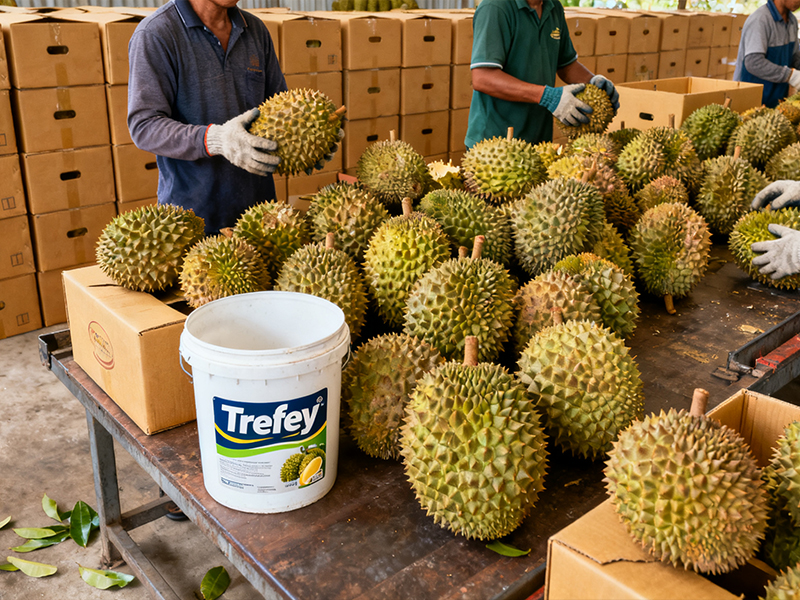
Bumper harvest alert! 🎉 Our fertilizers boosted this durian farm’s yield & quality. Thicker flesh, sweeter taste—science meets soil!
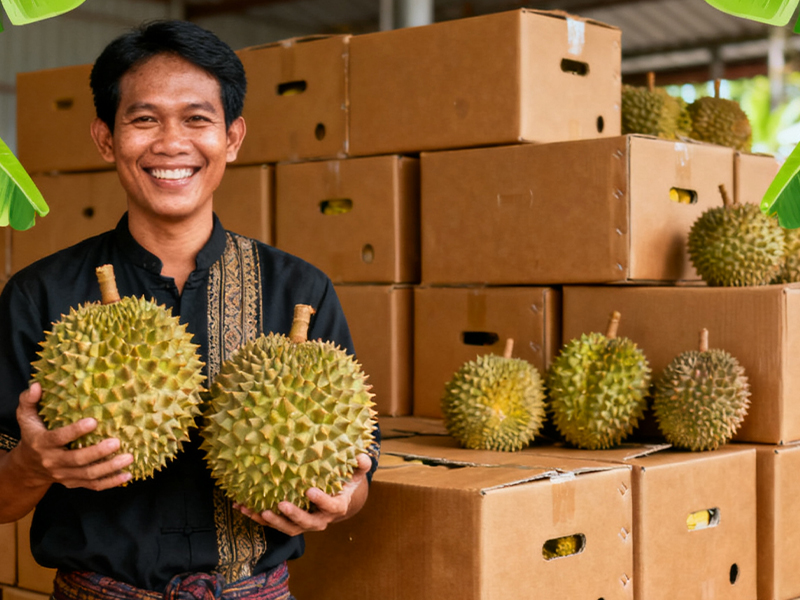
Dealers’ joy = our pride! 😃 Trelfey-fed durians fly off shelves fast. Higher profits, happier partners!
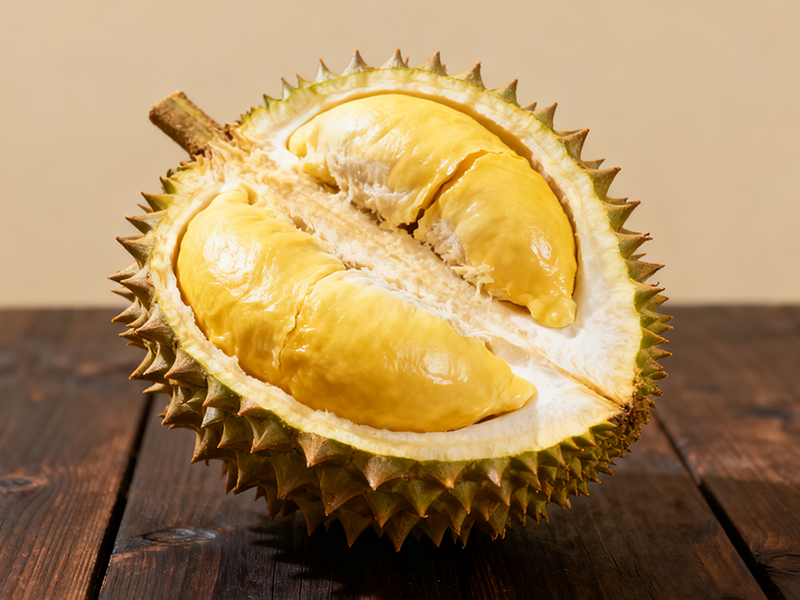
Golden perfection! ✨ Plump, creamy durians grown with Trelfey’s nutrient magic. Taste the difference!
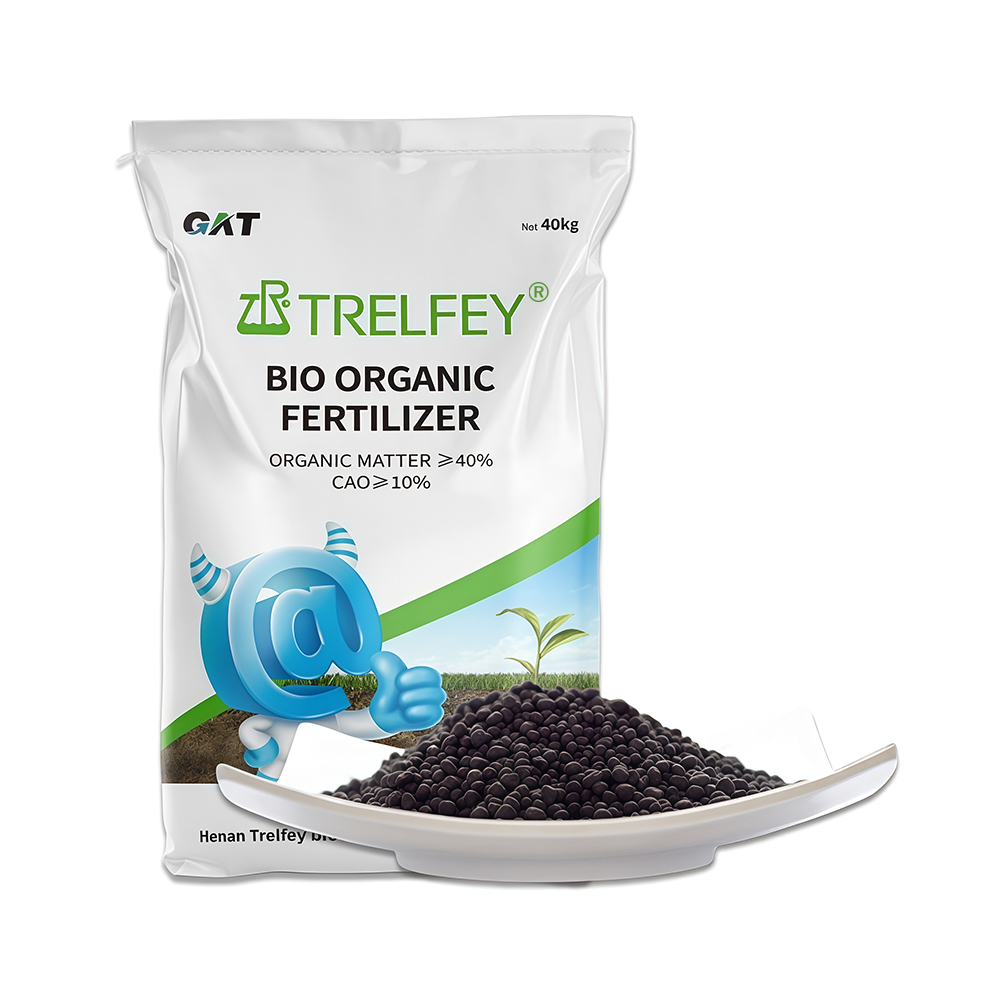
Bio-organic fertilizer
Organic matter ≥40%, CaO≥10%
The number of beneficial live bacteria ≥0.20 billion/g
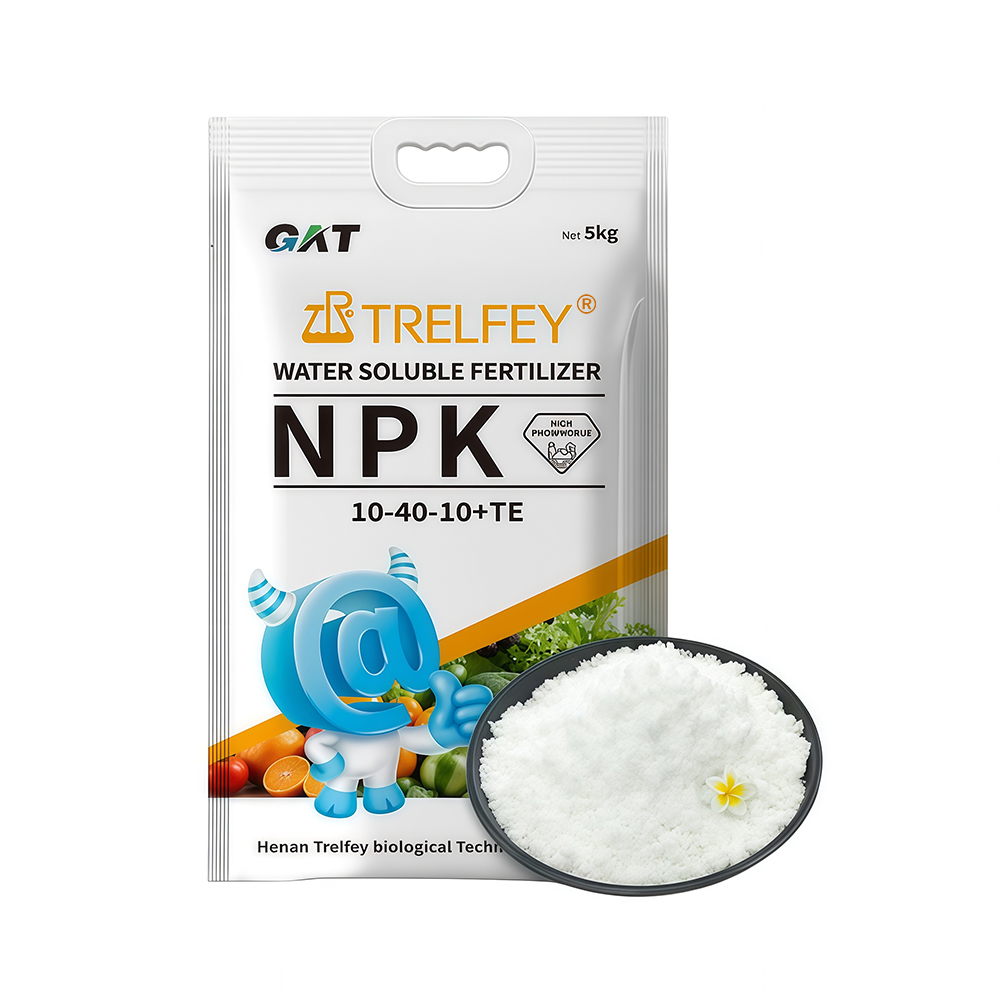
Water soluble fertilizer
Protect the roots and nourish the roots, protect the buds and protect the flowers
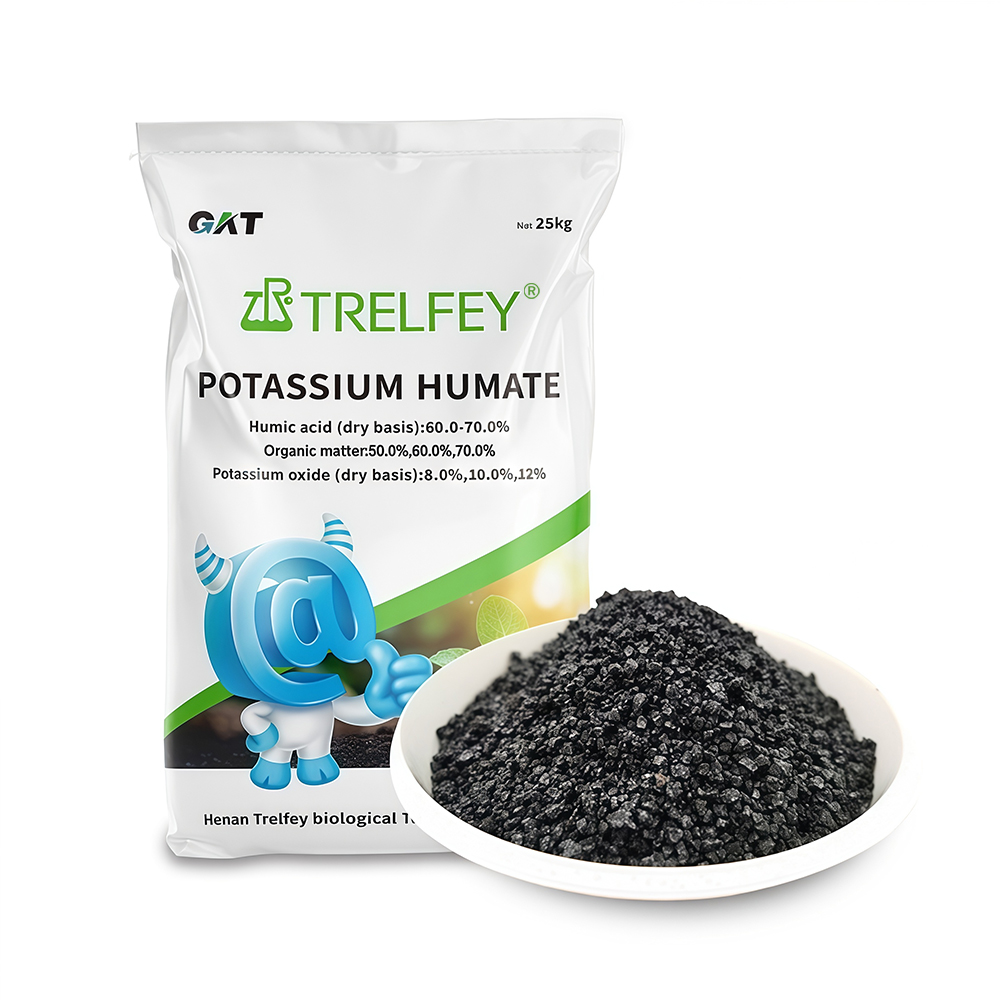
Potassium humate granules
Humic acid (dry base): 60.0-70.0%
Total nutrient (KOO): 8.0%-12.0% (customizable)
